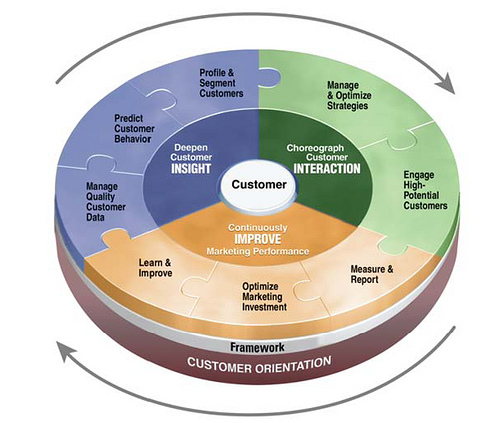Outcomes of a Customer-Centric Model
The channel revolution, from the “Big Four” (print, radio, TV and outdoor) to the convergent, omni-channel environment we exist in today, has not only affected how marketing messages are distributed but it has altered consumerism in general. It has forever disrupted the flow of information and the buying cycle and shifted the balance of power to consumers. The cause and effect for companies is a loss of control of brand, pricing power and competitive barriers. The influx of new entrants across many categories has shrunk margins, fueled commoditization and accentuated the need for specialization.
To regain a competitive edge, companies are now forced to think in more focused, customer-centric terms. Instead of relying exclusively on producing superior products to meet the demands of the greatest number of individuals, product development and marketing strategies need to be crafted around niche segments, or specific buyer personas (think “soccer moms”) with generally similar characteristics (needs, desires, methods of communication, etc.).

Marketing winners will figure out how to utilize data insights to bring the product, customer journey and brand experience together in a seamless and personal fashion to these core groups. They will actively listen to customers and break down internal silos to foster cross-department collaboration between peers across the customer touchpoint spectrum (product development, marketing, customer service, etc.). And they will continuously measure and report on key metrics to optimize marketing campaigns around the most valuable customer segments.
At its essence, customer-centricity celebrates the idea of heterogeneity, or concept that not all customers are created equal. So in this new paradigm the overarching goal is to maximize the value of the highest potential customers, instead of the revenue from all products.
That everything-revolves-around-the-customer mindset has catapulted the demands on data and marketing intelligence to a whole new stratosphere. But by capturing and leveraging data across all interactions in the customer journey, organizations can create significant relationship advantages, marketing efficiencies and be well-positioned for the future. Three specific benefits to the customer-centric approach include:
Enhanced loyalty
Today’s customers are constantly bombarded by marketing messages and continuing to tune out those that are not meaningful and relevant.
Lifting marketing response, therefore, cannot be achieved solely by increasing frequency, but by engaging customers with more coordinated and intelligent interactions. Customers demand that brands treat them as individuals. It has become harder than ever for businesses to earn their trust. And when customers do engage with a brand, they expect personalized interactions tailored to their specific needs. The days of “spray and pray” marketing and ignoring relevancy are over.
Improved channel efficiency
As response rates decline and competition increases, forward-thinking marketers will harness data to optimize their mix of channels and reduce waste by understanding the role and impact of each channel within the customer journey. No longer are we limited to traditional direct marketing silos. Through robust data capture tools, access to granular customer insight across the entire marketing spectrum of digital, social, email, direct mail, etc. is readily available. As a result, we can develop a better understanding of channel relationships and purchase cycles and better control the sequence and relevance of communications.
Increased revenue generation
Although customers are the lifeblood of company and one of their most valuable assets, many business leaders are unable to answer the types of questions that should drive decision-making.
What’s the potential lifetime value of different customer segments? What’s your cost to acquire and retain these customers? What attributes do those most valued customers have in common?
By capturing and connecting data to niche customer groups, businesses are able to invest around not only their most prized existing customers but more importantly the most potentially valuable future customers.
Related posts:
Categories:



